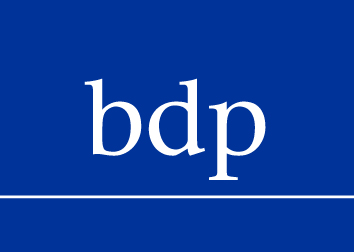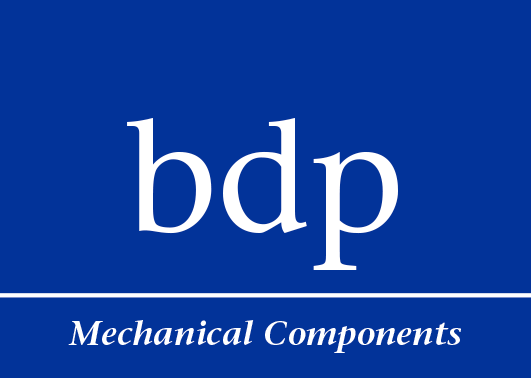Newsletter Marzo 2024:
By: Carlos Carulla
Strategic Alignment for Project Success: Navigating the Crucial Connection Between Customer Requirements and Supplier Capabilities
In the dynamic landscape of project procurement, the initial focus often centers on securing the best price during the offer stage. However, the true key to success lies in what transpires after the project is awarded. The alignment of customer’s technical requirements with supplier capabilities emerges as the linchpin for project success. At bdp Mechanical Components, we recognize the criticality of this phase, understanding that the collaboration between customer and supplier technical departments, logistics and quality assurance is paramount.
1. Transition from Offer to Collaboration:
- Price Dynamics: While the offer stage primarily revolves around securing the most competitive price, it marks just the beginning of a more intricate process. Once the project is awarded, the focus must shift from cost-centric decisions to collaborative efforts that encompass a broader spectrum of project elements.
- Multifaceted Collaboration Across Departments: As the project transitions beyond the offer stage, the collaboration between customer and supplier becomes a multidimensional endeavour. It is not only a matter of technical specifications, but also involves various departments such as logistics, quality assurance and other critical facets. These collaborative discussions serve as the foundation for aligning expectations and capabilities across the entire project lifecycle.
2. Nominating the Right Partner:
- Pre-existing Alignment from Offer Stage: The transition from the offer stage to project execution is facilitated by prior conversations that ensured the alignment of the offer with the customer’s requirements. However, this marks just the beginning of a more intricate phase that demands a comprehensive understanding of project intricacies.
- In-Depth Collaboration Across Departments: The true strength of a successful partnership lies in the seamless collaboration between various departments of both the customer and the supplier. Technical departments, logistics, quality assurance and other critical facets must engage in open communication to create a unified front. Through detailed consultations, these departments work in tandem to address delivered quantities, product specifications, documentation, project lifetime, technical intricacies and logistics details, ensuring a holistic alignment with the project’s objectives.
- Fostering Enterprise-Wide Synergy: Beyond individual departments, the collaboration extends to fostering synergy across the entire enterprise. This entails breaking down silos and ensuring that each facet of the supplier and customer organizations works cohesively. Transparent communication and a shared understanding of project goals are paramount, creating an environment where both enterprises function as one, collectively driving the project towards success.
3. Mitigating Challenges:
- Preserving the Original Offered Price: As projects progress, unforeseen challenges may emerge that pose a risk to maintaining the initially offered price. To address this, suppliers must engage in proactive measures to preserve the original pricing structure. This involves open communication with the customer to assess the feasibility of adhering to the initial cost commitments.
- Collaborative Adjustments with the Customer: In cases where strict adherence to the original specifications is challenging, a collaborative approach is essential. Transparent communication allows for discussions on possible adjustments without compromising the integrity of the project. These adjustments may include fine-tuning technical specifications, revisiting project timelines, or optimizing logistics processes. The importance of each adjustment is evaluated based on its impact on project goals and customer expectations.
- Cost-Impacting Actions in Gradations:
- Minor Adjustments with Minimal Impact: Suppliers may propose minor modifications that have minimal impact on costs. These could include slight adjustments in technical specifications or optimization of logistics routes. Communicating such changes transparently ensures alignment with the customer’s expectations.
- Efficiency Enhancements: Implementing internal efficiency enhancements can help absorb additional costs without necessitating a significant price adjustment. Suppliers can explore process optimizations and resource utilization improvements to maintain competitiveness.
- Negotiating Partial Increases: If maintaining the original price becomes untenable, negotiating partial increases could be explored. This involves discussing with the customer to reach a middle ground that minimizes the impact on project costs while acknowledging the need for adjustments.
- Strategic Cost Re-evaluation: In cases where significant adjustments are unavoidable, a strategic re-evaluation of costs may be necessary. This involves a comprehensive analysis of project elements to identify areas where cost savings or optimizations can be implemented, ensuring the least disruptive impact on the customer.
- Transparent Communication on Major Adjustments: If major adjustments are unavoidable, transparent communication becomes paramount. Suppliers must clearly articulate the reasons behind the adjustments, providing a detailed breakdown of the impact on project costs. This fosters understanding and collaboration between the supplier and the customer in navigating challenges while maintaining a mutually beneficial relationship.
4. Proactive Problem Resolution:
- Identifying Potential Challenges: Proactive problem resolution is a pivotal aspect of project management, particularly as projects advance beyond the offer stage. Anticipating potential challenges allows both the customer and supplier to take pre-emptive measures, ensuring the smooth progression of the project. This involves a meticulous examination of technical specifications, logistics plans and other critical project elements.
- Early Intervention for Seamless Execution: Delays, quality issues, or deviations from the project scope can be mitigated through early intervention. Collaborative efforts during the post-award phase enable the identification and resolution of challenges before they escalate. Open communication channels between the technical, logistics and quality assurance departments facilitate a swift response to any deviations from the project plan
- Adjustments and Solutions: The collaborative nature of the customer-supplier relationship shines during the problem resolution phase. Should challenges arise, both parties engage in a proactive dialogue to explore potential adjustments and solutions. This may include revisiting technical specifications, modifying logistics plans, or re-evaluating project timelines. The goal is to find pragmatic solutions that align with project goals while minimizing disruptions.
- Iterative Communication: Problem resolution is an iterative process that necessitates ongoing communication. Regular check-ins between technical departments, logistics teams and quality assurance specialists ensure that adjustments are implemented effectively. This iterative communication not only addresses immediate challenges, but also establishes a foundation for continuous improvement throughout the project lifecycle.
- Transparent Reporting and Documentation: Transparency is paramount in the resolution of challenges. Both the customer and supplier should engage in transparent reporting and documentation of any adjustments made. This documentation serves as a reference point, providing insights into the decision-making process and fostering accountability on both sides.
- Lessons Learned for Future Collaborations: Every resolved challenge presents an opportunity for learning. Engaging in a collaborative retrospective, both customer and supplier can identify lessons learned and best practices. This feedback loop contributes to continuous improvement, enhancing the efficiency and effectiveness of future collaborations.
In conclusion, the alignment of customer’s technical requirements with supplier capabilities is not a one-time affair, but an ongoing commitment that defines project success. The collaborative efforts undertaken during the post-award phase lay the groundwork for a seamless and successful project execution.At bdp Mechanical Components, we prioritize these engagements, ensuring that our commitment to excellence extends beyond the bottom line, fostering lasting partnerships built on transparency, communication and a shared vision for project success.
Feel free to contact us at sales@bdp-mc.com with any further questions you may have regarding outsourcing of mechanical components.
Our bdp Mechanical Components team will be happy to advise and support you.


